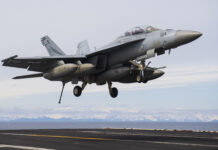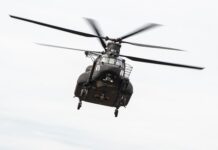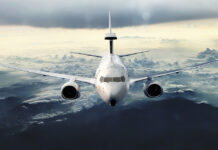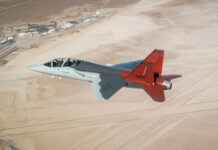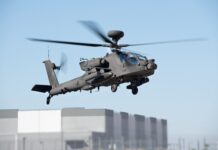Boeing has mounted a robust defence of the T-7 Red Hawk advanced jet trainer (AJT), which the company is developing with Sweden’s Saab, following a critical May 2023 report by the US Government Accountability Office (GAO) that cited “significant issues with the escape system, flight software, simulator, and aircraft sustainment”.
Briefing journalists at the Paris Air Show on 20 June 2023, Donn Yates, Executive Director for Air Force Programs within the Strategy and Business Development arm of Boeing Defense, Space and Security, maintained that “What we’re delivering is exactly what we need, and we need it yesterday.”
The US Air Force (USAF) selected the T-7 to meet its T-X trainer requirement on 27 September 2018 in a programme intended to deliver 351 aircraft and 46 simulators to replace its ageing T-38 Talon AJTs. Boeing has so far conducted 500 T-7 flights with two production-representative jets (PRJs), Yates noted, yet the programme has encountered challenges that have led to Boeing falling behind schedule – nearly 10 years behind the USAF’s initial estimate, according to the GAO.
A key issue is the overlap between development and production, with the GAO noting that the USAF “has not yet ordered aircraft beyond five initial test aircraft. But the contractor began producing parts in March 2022 and intends to begin assembling aircraft in early 2024”.
The GAO noted that, “with years of testing forthcoming, there will likely be issues and changes to the aircraft’s design. As a result, the contractor’s decision [to do production work] complicates the Air Force’s oversight of aircraft production”.
While Yates would not be drawn on when the revised T-7 initial operating capability (IOC), which was originally scheduled to take place by the end of October 2024, would occur, he maintained that Boeing has “a lot of flexibility built into the timeline”.
Yates conceded that the Covid-19 pandemic, which took hold in early 2020, created “a huge impact” on the T-7 programme, but said in relation to the GAO report that the relationship between the contractor and the customer “goes through ebbs and flows”.
In light of the GAO stating that the T-7’s pilot escape system does not yet meet safety standards, Yates noted that the T-7 will be the first platform to receive the new Collins Aerospace-produced Advanced Concept Ejection Seat (ACES) 5. The system requirements for this ejection seat were expanded by the USAF to accommodate pilot weighing from 103 to 245 lb (46.72 to 111.13 kg), putting Boeing and the T-7 into uncharted territory in which development issues were inevitable, Yates argued.
Regarding issues with the T-7’s associated canopy fracturing system, Yate said that, between the air force and the company, “at times there was a disagreement over the data”.
The GAO additionally stated that the USAF and Boeing “disagree on the maturity level of the flight control software. The contractor plans to complete the APT flight control software by mid-2023. However, Air Force software experts said that several additional software iterations will be required due to anticipated deficiencies found in flight testing.”

These issues notwithstanding, Yates understandably emphasised the positive aspects of the T-7. He noted that the aircraft was “built to fly three, four, five times a day” and could receive an engine change in 40 minutes, is “affordable to acquire, affordable to operate”, and is effectively a “flying simulator” that can reproduce multiple air combat scenarios by accommodating a mix of live and virtual training. He also claimed that the aircraft’s performance was “off the wall”.
Yates also lauded the fact that the T-7’s 8K resolution simulator allows real air-to-air engagements to be taught to a student pilot, given that it can show realistic visual cues, and allows true night-vision goggle training to be conducted.
Asked by ESD about the possibility of the T-7 being developed into a light attack variant, Yates said that Boeing “has always planned for derivatives and variants”, adding “You might think that the T-7 is a great platform for light strike – and we might think that too.”
Meanwhile, Boeing has responded to the USAF’s invitation to tender for an Advanced Tactical Trainer (ATT) requirement, which would bridge the gap between initial trainers and combat aircraft as well as giving pilots a cheaper opportunity to fly more often compared to frontline fighter types. The air force’s ATT requirement would cover at least 100 aircraft and possibly as many as 400 in addition to the T-X requirement for 351 aircraft.
Peter Felstead




